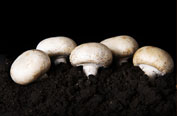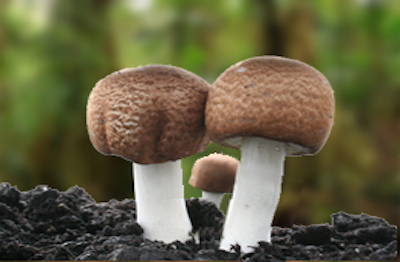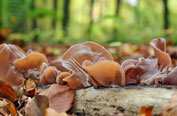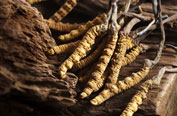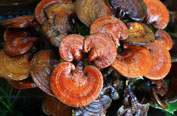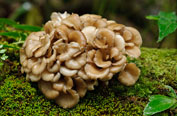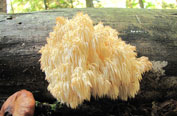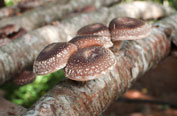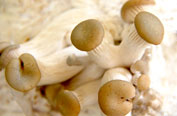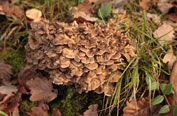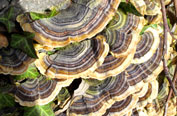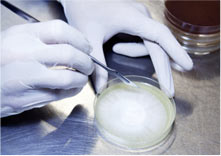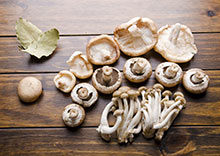
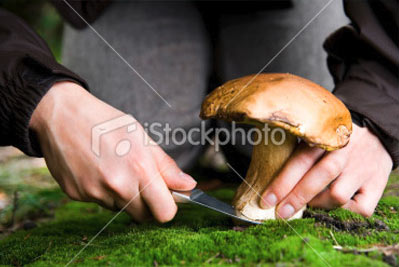
Production of spore syringes
(Level 2 - advanced cultivator)
Spore syringes contain spores dissolved in water and are used to inoculate substrates. Hobby-mycologists tend to work with spore syringes, because even if used in a not 100 % sterile environment, the substrates are seldom contaminated.
It’s rather easy to produce small to medium amounts of substrates or grain spawn with spore syringes. If you inoculate substrates with a spore syringe, you get a “Multi-culture” (look up “Growing mycelium out of spores”), which mostly results in less crop yield, compared to the use of selected rhizomorph mycelium strains.
Recommended tools:
Sporeprint
Jars (sterilisable)
Scalpel with sterile blades
Empty syringes and cannulae
Latex gloves
Facemask and hairnet
Filter disk
Workspace disinfectant - Bacillol
Hand disinfectant
Water
Glove Bag (sterile workspace)
or HEPA-Filter
We recommend using about 100 ml water and one spore print per jar. The lid of the jars needs a hole of about 1 cm in diameter; via this hole you will later fill the syringes. Fill the jars with water (2/3 of the jar) and put on the lid with the hole during sterilisation. Wrap aluminium foil over and around the lid, sterilise the glasses and the lid with a hole AND one additional lid without a hole (that one will be used for mixing the water with the spores - also wrap this one in aluminium foil), for about 30 minutes.
We recommend using a pressure cooker for sterilisation.
Counting the sterilisation time from the moment, the pressure gauge reaches its highest stage (for household pressure cookers). If you have a professional pressure steriliser at your disposal, sterilise at 121°C/ 250°F/ 15 psi/ 1.05 bar.
Leave the cooker to cool out in clean place or in front of HEPA-filter after sterilization. You can put a clean wet piece of cloth over the cooker during the cooling process to filter the air streaming into the cooker, if working without a HEPA-filter.
To keep contamination risk low, please work clean! Use a new, sterile scalpel blade for each spore print.
Open the lid as soon as the pressure has reached zero. Wash and disinfect your hands and forearms and use latex gloves. Store the jars in a clean place (in front of a HEPA-filter or in a glove box). Proceed as soon as the glasses have cooled down to room temperature (less than 86°F or 30°C).
Before you start, please wash your hands and arms with hot water and soap. Clean and disinfect your working space. Put on hairnet, face mask and latex gloves. Disinfect your gloves and wait until they are dry.
Use a scalpel to scratch the spores off the spore print into the water. Make sure not to touch the spores while holding the spore prints. After you have scratched off the spores into the water, put on the lid (without hole) and shake the jar well.
Change the lid to the one with the hole. Stick the cannula through the hole and fill the syringe. To avoid contamination, be careful not to touch the lid with the needle or needle with your hands.
We recommend packing the syringes airtight using a zip-lock bag. Stored in a dark and cool place (max. 20°C), the spores will be viable for about one year (depending on mushroom species).
To test their ability to germinate, put a few ml (1 or 2 drops) on a petri dish with agar medium. The mycelium will start to grow after a few days (for detailed instructions kindly have a look on chapter: „Growing mycelium out of spores”).

